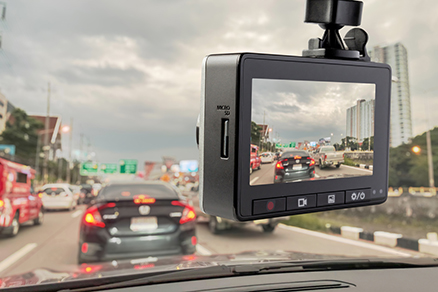One only has to spend a few minutes on any social media platform to see the staggering amount of video footage captured daily by users and technology. From porch thefts to police chases, video is everywhere, documenting almost every conceivable situation. Whether caught by trail cams, cell phones, or video surveillance equipment intended to thwart crime, video is here to stay.
 In personal injury law, technological advancements significantly transform how evidence is collected and cases are won. It’s not an exaggeration to say that technology is revolutionizing how lawyers and medical professionals handle personal injury cases. Moreover, using video footage significantly impacts insurance premiums, settlements, and overall outcomes.
In personal injury law, technological advancements significantly transform how evidence is collected and cases are won. It’s not an exaggeration to say that technology is revolutionizing how lawyers and medical professionals handle personal injury cases. Moreover, using video footage significantly impacts insurance premiums, settlements, and overall outcomes.
Learn more about our Sacramento Personal Injury Attorney Services.
Gathering Evidence
Evidence in video footage of any type, from professional-grade security surveillance systems to drone and cell phone footage, plays an increasingly important role in deciding personal injury cases. One reason is that video technology can provide hard-to-access data and other information.
Types of Video Evidence
The range of methods and technology for capturing video images is vast and includes the following:
- Surveillance cameras: Often found in public spaces and businesses and typically used for security, professional surveillance cameras often capture events like slips and falls and physical altercations that happen on the same property where they are located. However, a business’s security cameras sometimes inadvertently capture valuable footage for use in personal injury cases, such as car accidents on adjacent roadways.
- Bodycams and Dashcams: Footage harvested from a law enforcement officer’s bodycam or a civilian vehicle can provide compelling evidence supporting or refuting a story when no other witnesses are located or witness statements conflict.
- Mobile phones and devices: Smartphones or tablets can capture excellent quality footage.
What is the impact of video footage on personal injury cases?
The use of video footage has become instrumental in helping sort out the facts of personal injury cases in several ways:
- It proves liability: Footage indicates fault and even negligence, such as an employee seeing but not cleaning up a spill that leads to a slip and fall. This can significantly impact settlement amounts.
- Credibility and Verification: Video footage can provide an unbiased account of events supporting or refuting the witness and the testimonies. The duplicate footage can also injure the party’s statements and o verify that an injury occurred.
- Preservation of Evidence: Video footage is a permanent record that maintains its integrity, which is helpful for legal proceedings that may take long to conclude.
Challenges
As with other types of evidence in personal injury cases, video footage must be obtained lawfully. It must also be relevant to the case or claim.
Additionally, securing video footage can be challenging, and a skilled personal injury attorney with experience obtaining this property type is critical. Subpoenas or other formal requests must often be made, especially when the footage may be the property of a government entity or private business.
Skilled and Affordable Personal Injury Attorneys Are Available
Eason & Tambornini’s experienced personal injury attorneys have over 100 years of legal experience. We strive to achieve maximum, fair settlements for every client we serve.
FREE Consultation and NO Upfront Legal Fees
Our personal injury attorneys offer a free, no-risk consultation to discuss your claim. We accept cases contingently, paying nothing until you win a settlement.
You can schedule a free consultation today by calling Eason & Tambornini at (916) 438-1819.
